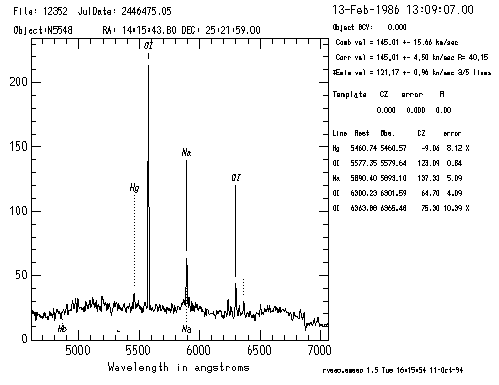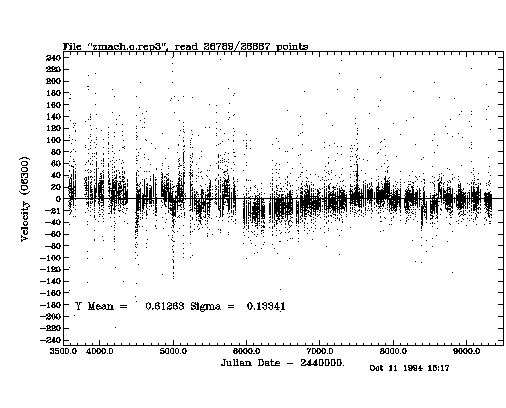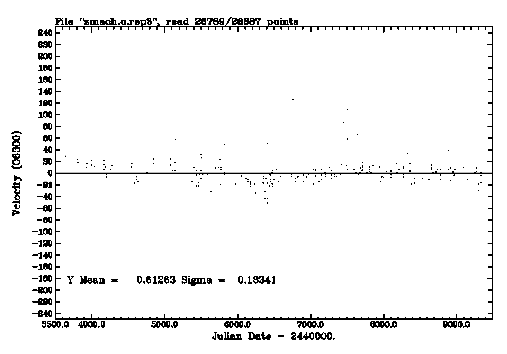
An individual sky spectrum with sky lines identified looks like this:

An IRAF program was already being used to convert Z-Machine spectra from SAO's internal archive format to IRAF .imh and .pix files. A CL script, emrange, was written to run through the entire archive, or portions thereof, with a single command.
A substitute line list was set up with all of the bright night sky lines. Since the mercury line strengths varied significantly, it was decided to look at the redshift of just the oxygen lines.
The results were tabulated in a file:
00001 2443575.69726 21 0 2804 44 3.5 2804 44 E 1 1 21.38 0.00 0.00 00002 2445219.24201 13 0 1828 34 4.8 1828 34 E 1 1 13.27 0.00 0.00 00003 2443575.79326 -37 0 0 0 0.0 0 0 E 1 1 -37.00 0.00 0.00 . . . 27169 2449342.03237 -2 1 35477 62 2.1 -2 62 E 3 3 4.85 -17.34 -32.84 27170 2449336.76664 -28 0 4069 45 2.9 -28 45 E 3 3 -27.92 -28.44 -38.31 27171 2449300.78227 -17 0 5465 26 6.2 -17 26 E 3 3 -9.00 -30.71 -41.82where the columns are reduced file number, Julian Date of observation, emission line velocity and error, cross-correlation velocity (from a galaxy template) with error and R-value, combination velocity and error, quality flag, number of lines found, number of lines fit, and velocities in km/sec for OI lines at 5577.35, 6300.23, and 6363.88 Angstroms.
Due to the distribution of lines in the calibration lamp spectrum, the
position of the OI line at 6300 Angstroms was most certain, so it was
plotted over the 15 years during which Z-Machine data was taken:

Each vertical grouping is one month's dark-time run, with larger gaps
usually indicating summer telescope shutdown. It is obvious that some
runs had a large scatter in sky "velocities", but for the most part, the
sky "velocity" distribution is well within the 50 km/sec error expected.
To clarify the data, median velocities were plotted for each run:
